N8264
Nucleoside Phosphorylase from microorganisms
lyophilized powder, ≥10 units/mg protein
Sinónimos:
Nucleoside Phosphorylase bacterial, PNP, Purine nucleoside phosphorylase, Purine nucleoside:orthophosphate ribosyltransferase
About This Item
Productos recomendados
form
lyophilized powder
specific activity
≥10 units/mg protein
mol wt
~120 kDa
composition
Protein, 40-80%
storage temp.
−20°C
InChI
1S/C10H12N4O4/c15-2-6-7(16)8(17)10(18-6)14-4-13-5-1-11-3-12-9(5)14/h1,3-4,6-8,10,15-17H,2H2/t6-,7-,8-,10-/m1/s1
InChI key
MRWXACSTFXYYMV-FDDDBJFASA-N
¿Está buscando productos similares? Visita Guía de comparación de productos
General description
Application
- in phosphopentomutase assay for adenosine synthesis
- for the conversion of 7-methylthioguanosine to 7-methylthioguanine
- in the synthesis of cytokinins in lyophilized cotton plant samples
Biochem/physiol Actions
Physical properties
Michaelis constants : 6.4 x 10-5M (Inosine), 3.2x10-4M (Pi)
Inhibitors : p-Chloromercuribenzoate, SDS, Hg++, Ag+Optimum pH : 7.5 - 8.0
Optimum temperature : 65oC
pH Stability : pH 6.0 - 9.0 (30oC, 16hr)
Thermal stability : below 60oC (pH 7.7, 30min)
Unit Definition
Physical form
Storage Class
11 - Combustible Solids
wgk_germany
WGK 3
flash_point_f
Not applicable
flash_point_c
Not applicable
ppe
Eyeshields, Gloves, type N95 (US)
Certificados de análisis (COA)
Busque Certificados de análisis (COA) introduciendo el número de lote del producto. Los números de lote se encuentran en la etiqueta del producto después de las palabras «Lot» o «Batch»
¿Ya tiene este producto?
Encuentre la documentación para los productos que ha comprado recientemente en la Biblioteca de documentos.
Los clientes también vieron
Nuestro equipo de científicos tiene experiencia en todas las áreas de investigación: Ciencias de la vida, Ciencia de los materiales, Síntesis química, Cromatografía, Analítica y muchas otras.
Póngase en contacto con el Servicio técnico
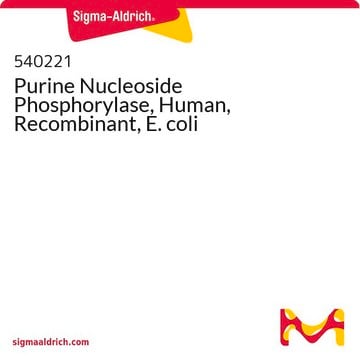
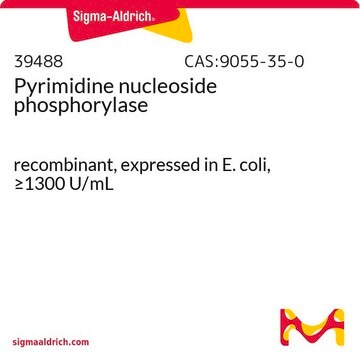

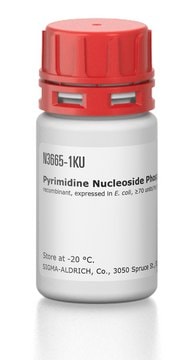

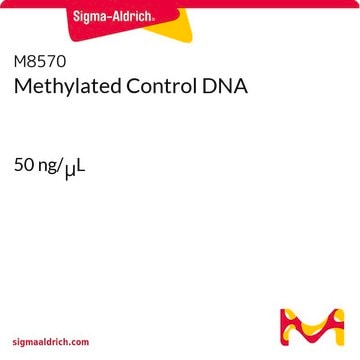



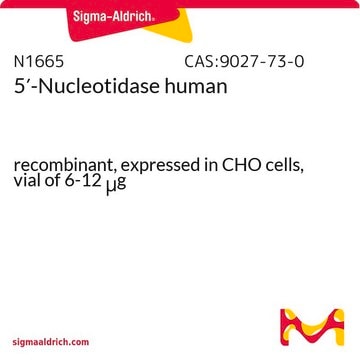
![7-Diethylamino-3-[N-(2-maleimidoethyl)carbamoyl]coumarin suitable for fluorescence, BioReagent, ≥97.0% (HPLC)](/deepweb/assets/sigmaaldrich/product/structures/341/038/a7e0c464-8abe-4eb0-b253-6537f649d89c/640/a7e0c464-8abe-4eb0-b253-6537f649d89c.png)
